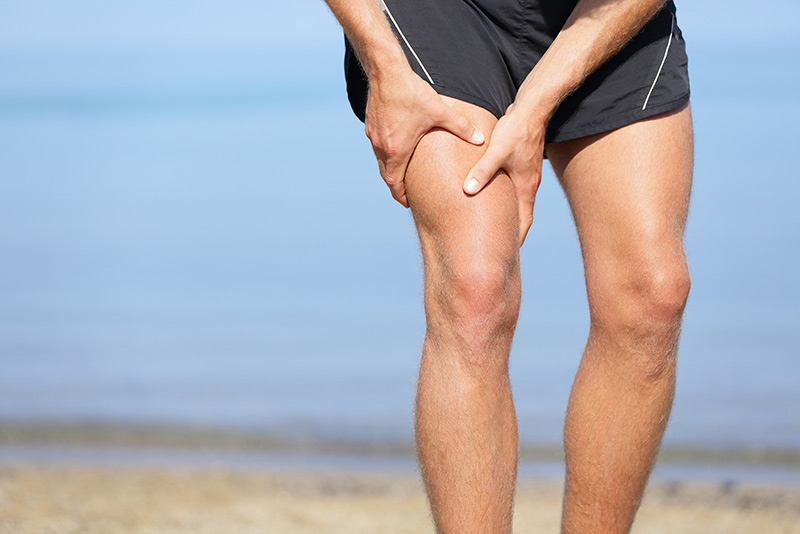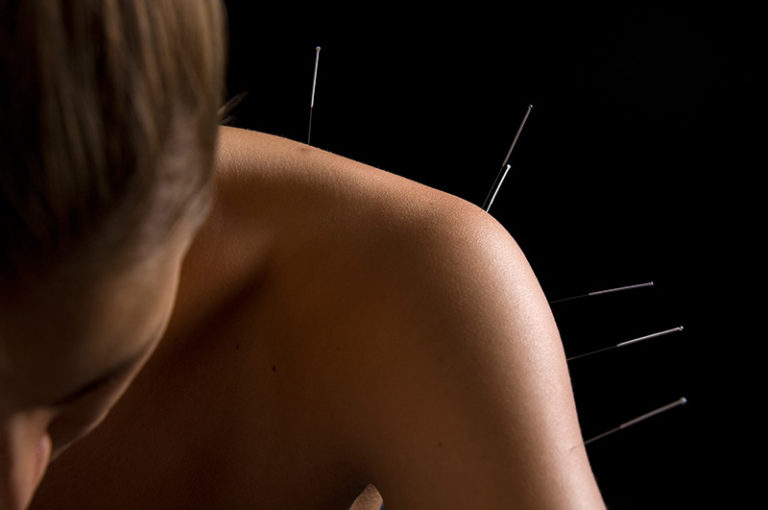 Sports are competitive in nature. When athletes compete, they sometimes push themselves beyond normal limitations, which can result in traumatic injury. No doubt, when this happens, you will want to get back out on the court, field, rink, course or trail as soon as possible and acupuncture can help.
Sports are competitive in nature. When athletes compete, they sometimes push themselves beyond normal limitations, which can result in traumatic injury. No doubt, when this happens, you will want to get back out on the court, field, rink, course or trail as soon as possible and acupuncture can help.
When traumatic injury occurs, check with a medical professional and make sure that it isn’t serious; fractures, dislocations, ruptured tendons and serious internal injuries should be treated by a medical doctor or hospital. But, after you are released to rest and recuperate, acupuncture is an ideal therapy to augment recovery, reduce pain, and speed healing time.
Common traumatic injuries that acupuncture can treat are:
- Shoulder rotator cuff tears and strains
- Wrist sprains and strains
- Knee ligament and meniscus injuries (these are especially common in sports that require a lot of sudden starting, stopping and direction changing)
- Ankle sprains and strains
- Vertebral disc inflammation in the neck or back
- Strains (pulls) and tears of any muscle or tendon (i.e. hamstring, groin, Achilles tendon)
Some sports injuries are not sudden, but slowly build-up over time due to repeated over-use of a particular joint or muscle. Usually, these types of injuries start out as a nagging dull ache. This is the best time to start getting treatment for these injuries. If you ignore them, they will build-up to become chronic and debilitating problems. Once advanced, these injuries often require more recovery time than acute, traumatic ones.
How do you distinguish between the nagging ache of a cumulative over-use injury and the typical soreness that accompanies working out? Here are 3 general guidelines to help you determine what your ache may be telling you:
- Cumulative injuries are often felt more in joints: shoulders, knees, elbows, wrists, hip joints. Conversely, typical “working-out” soreness is felt more in the muscles.
- With a cumulative injury, the nagging soreness occurs during or very shortly after playing your sport, whereas, typical muscle soreness from training doesn’t begin until 24 to 48 hours later.
- Cumulative injuries will repeatedly occur in the same area week after week, but soreness from working out usually will not.
Common cumulative, over-use injuries that acupuncture can treat are:
- Tennis elbow, golfer’s elbow and elbow bursitis
- Shoulder tendinitis, bursitis, arthritis and impingement syndrome
- Wrist tendinitis
- Achilles tendinitis
- Hip bursitis
- Illiotibial band syndrome
- Knee arthritis
Researchers from the Physical Education Institute at Zhengzhou University investigated the effects of Traditional Chinese Medicine (TCM) style acupuncture and herbs on amateur and professional athletes suffering from motor impairments due to the demands of physical training. Areas of the neck, back, and limbs were investigated. The researchers concluded that restoration of motility is significant as a result of applying acupuncture and herbs. However, an additive effect was discovered by combining acupuncture and herbs into a therapeutic regimen. The combination therapy produced superior patient outcomes.
Participants in the study suffered from physical motility limitations. Head and neck impairments accounted for 42% of the patients. Upper limb impairments comprised 24.6% and lower limb impairments accounted for 85.4% of participants. Acute physical limitations accounted for 85.4% of participants and 14.6% were patients with chronic motility impairments.
The total effective rate was calculated from a combination of patients in three categories of improvement: cured, effective, and improved. Patients rated as cured had freer movements of the limbs without any limitations and were able to participate in normal physical training. Patients in the effective category had complete resolution of soreness at the affected regions and movement was free and without limitation at lower levels of physically demanding activity. Improved patients had reduced pain levels and patients were able to perform simple exercises.
The total effective rate for the acupuncture only group was 70%. The herbal medicine group achieved a 62% total effective rate. A group receiving both acupuncture and herbal medicine achieved a total effective rate of 84.4%. The researchers concluded that acupuncture combined with herbs is highly effective for the treatment of physical activity induced motility impairments. The combined therapeutic approach is more effective than either treatment modality as a standalone procedure. Read more about this study here: http://www.healthcmi.com/Acupuncture-Continuing-Education-News/1512-acupuncture-frees-movement-from-sports-injuries
Most health practitioners prescribe traditional therapies for acute injuries, such as intermittent icing, wound compression and the use of anti-inflammatory agents. However, recent research by the Academy of Sports Medicine suggests medical experts may be over-treating injuries with excessive use of anti-inflammatory agents such as ibuprofen.
The concern is that in trying to control swelling, we may actually impede the bodies’ natural response to heal. However, it’s important to note that excessive swelling could be harmful if it causes pain or decreases blood flow. There are also the potential side effects that can occur from anti-inflammatory agents such as ulcers, internal bleeding and kidney dysfunction.
With this in mind, why not change direction when treating many athletic injuries? Acupuncture helps facilitate injury repair and wound healing by accessing energy pathways called meridians. The placement of the acupuncture needles on these pathways improves energy flow, which speeds healing.
When treating athletes who have sustained acute strains and sprains with acupuncture, they often return to exercise in almost half the time it would normally take using other recovery methods. The beauty of acupuncture is that there are few, if any, potential side effects.
Acupuncture is also a great treatment for chronic musculoskeletal issues like tendonitis, bursitis and arthritis by improving energy flow over these inflamed regions. Again, the common treatment has been prescribing anti-inflammatory medication and, if that is not successful, steroid injections. These have serious potential side effects, including possible tendon rupture. With acupuncture, healing is facilitated without a medication which makes it a “natural” remedy.
How does acupuncture help?
From the Chinese medical point of view, the body is an energetic collection of functions, not just a mechanical collection of parts. That is to say, we contain Life Energy, also known as Qi (“chee”). One is said to be in perfect health when this energy is flowing unimpeded, and in an adequate amount throughout the entire body. Qi is the basis for the proper functioning of all body processes: it provides structural integrity and stability, physiological efficiency and the potential for healing.
When you sustain an injury, the flow of energy in and around the area becomes disrupted, causing stagnation and pain. This energy stagnation also inhibits the proper circulation of blood and lymph to the area, extending healing times, prolonging swelling and bruising and increasing the need for pain medications.
Acupuncture works directly to free the flow of Qi through these areas of stagnation. This serves 3 main functions to assist healing and speed recovery:
- Increased circulation of Qi decreases pain, inflammation and swelling (all of which are signs of stagnation).
- Enhanced circulation of energy also brings increased circulation of blood and lymph. This means that fresh vital nutrients are more readily available to tissues that need them in order to mend.
- Enhanced circulation also carries dead cells and cellular waste products away from the injured site.
When Chinese herbal medicine is added to the acupuncture treatments, the healing and pain relieving effects are even greater. Herbs for injuries may be applied topically and/or taken internally, depending on the nature of the injury. Massage techniques may also be incorporated after the initial stages of recovery.
Additionally, it should be noted that acupuncture can also be useful for increasing energy. Acupuncture has the ability to reinvigorate an individual and help with excessive fatigue. As every athlete knows, it is imperative to have as much energy as possible to reach peak performance.
It is important to note that an individual should be evaluated and serious conditions ruled out for obvious causes of fatigue such as anemia, uncontrolled blood sugar, and low thyroid or overtraining syndrome before using acupuncture for energy enhancement.


